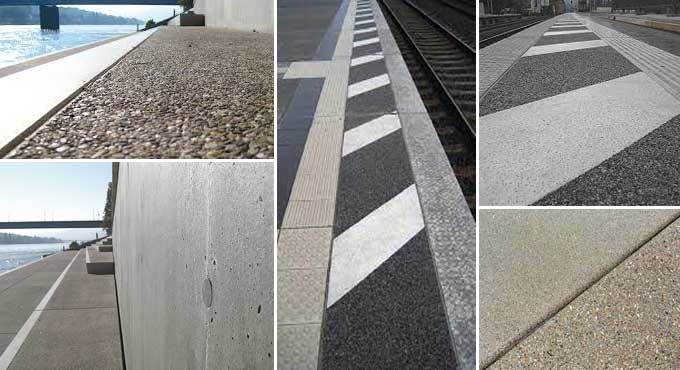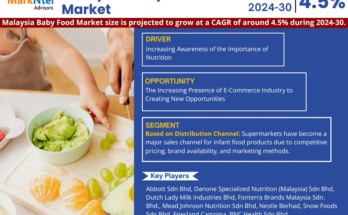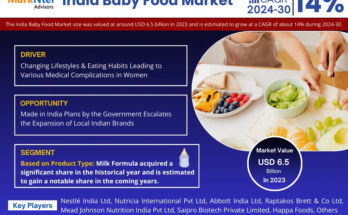Global concrete surface retarders market is predicted to proliferate during the forecast period 2024-2028F, because of the expansion of building activities, the development of infrastructure, and rising demand from aesthetically pleasing applications such as pool decks, patios, and driveways, etc.
Chemical compounds called “concrete retarders” are used to slow down the cement’s curing process. Typically, concrete retarders are used to stop the concrete’s surface from chemically hardening, allowing the cement to be washed off the following day to reveal the aggregate. Concrete surface retarders are simple to use and have a very short effective lifetime.
The substance can be used to strengthen the bonds between waterproofing materials and to make surfaces with exposed aggregate. Over the anticipated period, the market is anticipated to be driven by rising product demand in applications such as precast concrete, slip-resistant surfaces, and decorative pavements.
For removing uneven concrete surfaces, the product provides a simple and affordable option. It is ecologically beneficial because it contains no volatile organic compounds (VOCs). Growth in the market is anticipated to be fueled by rising demand for green building materials, which would help reduce the damaging effects of construction operations on the environment.
Increasing Demand for Green Buildings Propels the Concrete Surface Retarders Market Growth
The market for concrete surface retarders is anticipated to increase as sustainable and green building construction methods gain popularity. A green building employs sustainable materials in its construction for superior surface polish and improved aesthetic appeal, among other quantifiable aims. Water-based retarders are good for the environment and add an aesthetic touch to buildings. They give concrete surfaces an anti-slip quality.
Download FREE Sample Report @ https://www.techsciresearch.com/sample-report.aspx?cid=3330
There is a growth in demand for green buildings, especially in Europe and North America, because of various regulations that mandate the use of sustainable concrete in both commercial and residential constructions. Water-based concrete surface retarders are ideal for green buildings for vertical concrete surfaces and various horizontal applications, including sidewalks, driveways, construction joint floors, vertical construction joints, floors, and paving slabs, because they are solvent-free, environment friendly and have low odor. Precast concrete, slip-resistant surfaces, and aesthetically pleasing pavements are few examples of the applications that are projected to boost demand for the products and hence, the global concrete surface retarders market is expected to boost in the upcoming years.
For instance, Green Building Incentives in India:
The Leadership in Energy and Environmental Design (LEED) certification is a globally recognized label for eco-friendly construction projects in India. The only organization in India that offers LEED certification is called Green Business Certification Inc. (GBCI). In addition to LEED, GBCI in India manages a number of other certifications, including PEER, TRUE, EDGE, and SITES. In India, several states and central government organizations are putting more focus on green buildings to encourage energy-saving practices, and each state has already started to offer incentives for green certifications. These incentives aim to encourage private sector investment in sustainable building practices in India and to increase the financial viability of LEED-certified construction projects. The Indian government offers a number of incentives to promote LEED certifications and green development in India. Some examples include:
- Tax benefits: The Income Tax Act of India grants tax advantages to builders of LEED-certified structures. Green building assets including solar panels, rainwater harvesting systems, and waste management systems are eligible for up to 100% depreciation claims from developers.
- Loans: Through the Indian Renewable Energy Development Agency (IREDA), which is part of the Indian government, low-interest loans are made available for green-certified construction projects.
- Public procurement: The Indian government has implemented a policy that requires all government buildings to be meet green building standards and certified green standards.
- State-level incentives: Many Indian states have policies and plans in place to encourage the certification of green buildings, including tax exemptions and financial incentives for projects promoting renewable energy and energy-efficient structures.
- Fast-track approvals: Buildings that are certified green are eligible for incentives including expedited inspections, fast-track approvals, and reduced building fees.
- Promotion of renewable energy: The government provides subsidies and tax benefits to promote renewable energy in the country. Which results in indirectly promoting LEED-certified buildings.
Green Buildings Present a Multi-Trillion-Dollar Opportunity – As a result of new legislation and rising demand for sustainable solutions, green buildings will keep expanding their market share. The United States, China, Canada, and India are among the top 10 markets where the U.S. Green Building Council certified over 432 million square feet of LEED space in 2021. The greatest potential exists in emerging markets (EMs) for new green building initiatives. Globally, green buildings provide a USD 24.7 trillion investment potential by 2030 in EMs alone, led by the EMs projected to have the highest rate of urban population increase. According to population and urbanization estimates, the East Asia and Pacific area offers the highest investment potential at USD 16.0 trillion, followed by Latin America at USD 4.1 trillion.
The surge in the construction industry raises the market for concrete surface retarders.
The global recession of 2008 caused a significant dip in the construction sector, but since, it has continued to grow positively around the globe. Construction activity has increased recently in nations including China, India, and the United States. With 76 new skyscrapers constructed in China and 10 in the United States in 2022, both nations are experiencing rapid development. Additionally, emerging markets are seeing an increase in the building industry. For instance, the “Make in India” campaign was started by the Indian government to encourage new development projects in the nation. A significant increase of the construction industry in both developed and developing countries might lead to a positive future for the market for concrete surface retarders. The market is expanding because of the increasing use of concrete surface retarders in a variety of applications, including bridge decks, sidewalks, curbs, ramps, facade cladding, and concrete segment joints.Additionally, various countries such as India and China has invested in the infrastructure sector to enhance the lifestyle of the population, providing better facility in term of hospitality & highly advanced hospital, and helps to boost the tourism sector among others across the world. Some investments are below:
Investment in india:
- The infrastructure finance secretariat formed under budget 2023–24 to increase possibilities for private investment in infrastructure, assisting all stakeholders in attracting more private investment in infrastructure, such as roads, trains, urban infrastructure, and power.
- The capital investment outlay for infrastructure is being boosted under budget 2023–24 by 33% to USD 122 billion, which represents 3.3% of gdp and nearly three times the spending in 2019–20.
- In November 2022, the national investment and infrastructure fund (niif) is established as a cooperative investment platform between the government of india, foreign investors, multilateral development banks (mdb), and domestic financial institutions to facilitate investment across a variety of sectors in india through an india japan fund.
- In june 2022, the ministry of road transport and highways decided to invest worth usd 1.7 billion in 15 national highway projects in patna & hajipur, bihar.
- In october 2021, the governments of dubai and india agreed to work together to develop infrastructure in jammu and kashmir, including industrial parks, information technology towers, multifunctional towers, logistical hubs, medical colleges, and specialized hospitals.
- On 27th october 2021, according to the 12th iteration of the malaysia plan (2021-2025), the malaysian government allocated approximately usd 90 billion for existing and new developments. The 12th malaysia plan highlights an intended emphasis on the investment and development of infrastructure and utilities such as roads, trains, digital infrastructure, water supply, and energy supplies. While the infrastructure gap is the primary focus of all these investments and developments, east malaysian states are in particular, and it is meant to be a priority. There are also major transportation infrastructure developments already in progress which include:
- The east coast rail link project, which is expected to be completed at the end of 2026.
- The rapid transit system project linking the bukit chagar station in johor bahru with the woodlands north station in singapore, construction work started at the end of 2021.
- The 5,500-kilometre pan-borneo highway in east malaysia is expected to be complete by 2025.
Recent Development:
- On 3 March 2022, Euclid Chemical states that the three high-performance concrete admixtures were developed to address the continuously changing demands of concrete and construction professionals. Included in the new admixtures are Eucoshield, Eucon Eco-Strength, and Eucon Am-10L.
- In 2018, Sika AG expanded its presence in the Middle East by opening a production facility for concrete admixtures in Saudi Arabia. By lowering the expenses associated with supplying the nearby markets surrounding the Persian Gulf, this development is assisting the company in increasing its production capacity and optimizing logistics.
Market Segmentation
Global concrete surface retarders market is segmented based on raw material, type, and end user. Based on the raw material, the market is segmented into organic agents and inorganic agents. Based on type, the market is segmented into water-based and solvent-based. Based on end user, the market is segmented into residential, commercial. infrastructure, and others. The market analysis studies the regional segmentation divided among North America, Europe, Asia-Pacific, South America, and Middle East & Africa.
Company Profiles
BASF SE, MAPEI S.p.A, TK Products Construction Coatings, CEMEX S.A.B. de C.V., W. R. Meadows, Inc., Fosroc Inc., Sika AG, GCP Applied Technologies Inc, The Euclid Chemical Company, RussTech Inc. are among the major players that are driving the growth of the global concrete surface retarders market.
| Attribute | Details |
| Base Year | 2022 |
| Historical Years | 2018 – 2021 |
| Estimated Year | 2023 |
| Forecast Period | 2024 – 2028 |
| Quantitative Units | Revenue in USD Billion and CAGR for 2018-2022 and 2023E-2028F |
| Report Coverage | Revenue forecast, company share, competitive landscape, growth factors, and trends |
| Segments Covered | Raw Material
Type End User Region |
| Regional Scope | North America, Asia-Pacific, Europe, Middle East & Africa, and South America |
| Key Companies Profiled | BASF SE, MAPEI S.p.A, TK Products Construction Coatings, CEMEX S.A.B. de C.V., W. R. Meadows, Inc., Fosroc Inc., Sika AG, GCP Applied Technologies Inc, The Euclid Chemical Company, RussTech Inc |
| Customization Scope | 10% free report customization with purchase. Addition or alteration to country, regional & segment scope. |
| Pricing and Purchase Options | Avail of customized purchase options to meet your exact research needs. Explore purchase options |
| Delivery Format | PDF and Excel through Email (We can also provide the editable version of the report in PPT/pdf format on special request) |
Report Scope:
In this report, the global concrete surface retarders market has been segmented into the following categories, in addition to the industry trends which have also been detailed below:
- Concrete Surface Retarders Market, By Raw Material:
- Organic Agents
- Inorganic Agents
- Concrete Surface Retarders Market, By Type:
- Water-Based
- Solvent-Based
- Concrete Surface Retarders Market, By End User:
- Residential
- Commercial
- Infrastructure
- Others
- Concrete Surface Retarders Market, By Region:
- Asia-Pacific
- China
- Japan
- India
- Australia
- South Korea
- North America
- United States
- Canada
- Mexico
- Europe
- United Kingdom
- Germany
- France
- Spain
- Italy
- Middle East & Africa
- Israel
- Qatar
- Saudi Arabia
- UAE
- South America
- Brazil
- Argentina
- Colombia
- Asia-Pacific
Competitive Landscape
Company Profiles: Detailed analysis of the major companies present in the global concrete surface retarders market.
Available Customizations:
With the given market data, TechSci Research offers customizations according to a company’s specific needs. The following customization options are available for the report:
Company Information
- Detailed analysis and profiling of additional market players (up to five).
Related Reports
China Elevator & Escalator Market – Opportunities, Size & Growth [2028]
United States Rebar Steel Market – [2028] Growth, Trends & Forecast
North America Rebar Steel Market [2028]: Trends & Opportunities
Table of Content-Concrete Surface Retarders Market
- Product Overview
1.1. Market Definition
1.2. Scope of the Market
1.2.1. Markets Covered
1.2.2. Years Considered for Study
1.2.3. Key Market Segmentations
- Research Methodology
- Executive Summary
- Voice of Customer
- Global Concrete Surface Retarders Market Outlook
5.1. Market Size & Forecast
5.1.1. By Value
5.2. Market Share & Forecast
5.2.1. By Raw Material (Organic Agents, Inorganic Agents)
5.2.2. By Type (Water-Based, Solvent-Based)
5.2.3. By End User (Residential, Commercial, Infrastructure, and Others)
5.2.4. By Region
5.3. By Company (2022)
5.4. Market Map
- North America Concrete Surface Retarders Market Outlook
6.1. Market Size & Forecast
6.1.1. By Value
6.2. Market Share & Forecast
6.2.1. By Raw Material
6.2.2. By Type
6.2.3. By End User
6.2.4. By Country
6.3. North America: Country Analysis
6.3.1. United States Concrete Surface Retarders Market Outlook
6.3.1.1. Market Size & Forecast
6.3.1.1.1. By Value
6.3.1.2. Market Share & Forecast
6.3.1.2.1. By Raw Material
6.3.1.2.2. By Type
6.3.1.2.3. By End User
6.3.2. Canada Concrete Surface Retarders Market Outlook
6.3.2.1. Market Size & Forecast
6.3.2.1.1. By Value
6.3.2.2. Market Share & Forecast
6.3.2.2.1. By Raw Material
6.3.2.2.2. By Type
6.3.2.2.3. By End User
6.3.3. Mexico Concrete Surface Retarders Market Outlook
6.3.3.1. Market Size & Forecast
6.3.3.1.1. By Value
6.3.3.2. Market Share & Forecast
6.3.3.2.1. By Raw Material
6.3.3.2.2. By Type
6.3.3.2.3. By End User




